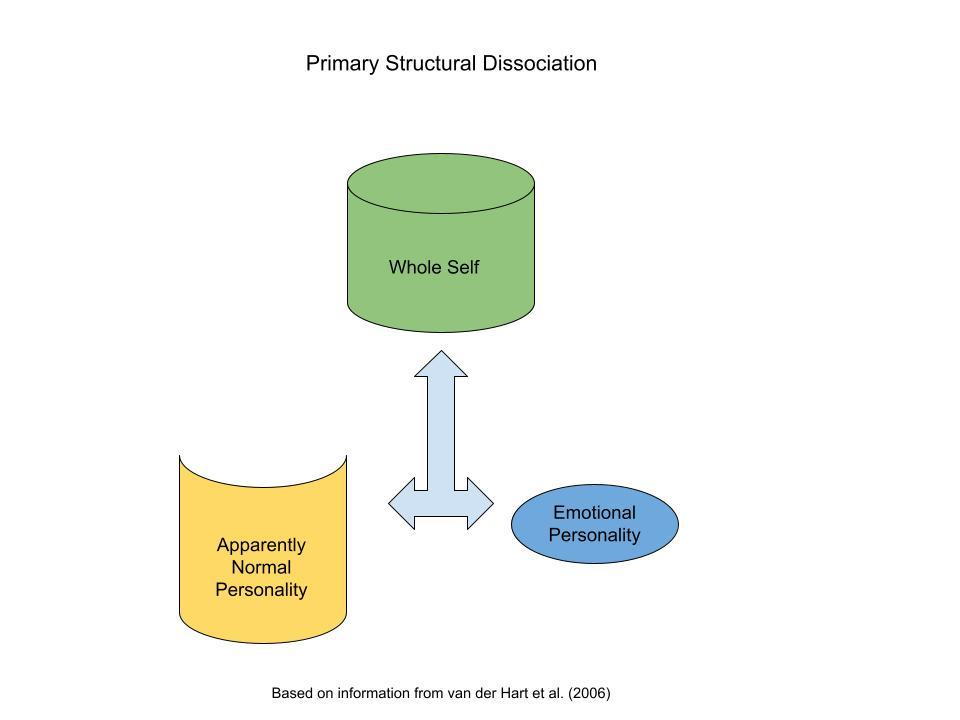
Photo by Bannon Morrissy on Unsplash
Editor's Note: This article discusses reactions to trauma and may be triggering for some readers.
Although the idea of parts might not come up in ordinary conversation, stories from the horror, fantasy and science fiction genres contain many tales of individuals with parts. Superheroes from comics and movies often have “alter-egos,” a term borrowed from psychology. Heroes like Superman and Spiderman have a part that functions in the world like an ordinary person (i.e, Clark Kent and Peter Parker). These alter egos conceal the more powerful superhero “secret identities." Some heroes, Spiderman, for example, develop their superhero part following a significant event or trauma (i.e., radioactive spider bite.)
In an earlier article, I mention that dissociation originally referred to a process in which a self fragments into parts because of a traumatic event. Parts that split due to trauma resemble the origin of a superhero. After a trauma event, survivors develop an "alter-ego" that functions in the world. They also develop trauma parts that conceal powerful energy. In this case, rather than superpowers, these parts contain trauma energy that hides beneath the apparently normal surface.
Several models help explain how a self contains parts. They include Ego State Theory, the Structural Dissociation Theory of Personality, and Internal Family Systems (IFS) Theory. In Ego State Theory, Watkins and Watkins (1997) refer to split off parts as ego states. In the Structural Dissociation Theory of Personality, Van der Hart et al. (2006) categorize trauma parts into two types – the Apparently Normal Personalities (ANP’s) and the Emotional Personalities (EP’s). In Schwartz’s Internal Family Systems (IFS) theory (2021), parts can be those who hold pain and wounding, known as exiles, and those that defend us from pain and suffering, known as protectors.
This diagram shows how one of the theories, The Structural Dissociation Theory of Personality (van der Hart et al., 2006), depicts the self splitting into an ANP and EP in a process known as primary structural dissociation.

The Structural Theory of Personality refers exclusively to traumatic dissociation. Much of the time, a survivor operates in the Apparently Normal Personality, the part that tends to interact with the world. Its purpose is to avoid the painful thoughts and memories of trauma and function as normally as possible. The Apparently Normal Personality can function for a long time, unless the Emotional Personality, which bears the weight of painful emotions and memories, gets triggered. At times a survivor may feel that the EP operates in the shadows, lying in wait to undermine all attempts at normalcy. Often, to maintain the rigid control necessary to block out EP’s, the ANP will adopt a numbed out, frozen strategy of hypoarousal (van der Hart et al., 2006).
Ego states, exiles, and protector parts develop to help individuals cope with challenges, including trauma. An exile can be thought of as a part containing the painful emotions a person does not feel equipped to deal with. The protector part develops to shield a person from the pain contained in the exile. Both IFS and Ego State Theory propose that everyone, from the “normal” person to a highly dissociated person has parts. In IFS theory, normal parts exist with awareness of one another and can exist harmoniously. We can use our more well-adjusted, mature parts to help our wounded parts heal.
Trauma experts believe that trauma parts possess unique qualities. Splits between parts of a traumatized person are so rigid that survivors may not see aspects of themselves as existing within themselves. Ogden and Fisher (2015) refer to split off or dissociated parts due to trauma as “not me” parts. Split off trauma parts include a person’s memories, emotions, and behaviors related to trauma.
IFS Theory proposes that each of us, no matter how fragmented or traumatized, possesses an indestructible, wise part called Self (Schwartz, 2021). We can discover the Self when our other parts become willing to step aside – when protectors realize they no longer need to protect.
Many survivors find it hard to believe that they could become whole. It is easy to lose sight of the true Self because it can blend with exiles and protectors. Many believe that the part of themselves who is unlikeable, awkward, and shut down IS THEM. According to IFS, this is not the true Self, but only one part of the whole. When survivors recognize the distinction, they begin a process called unblending, which brings them closer to their true selves.
Next, I explore alterations and lowering of consciousness. Alterations and lowering of consciousness for trauma survivors occur when a hypoaroused part interacts with the world, either because it is triggered or because it exists as a protector/ANP part.
The content of this blog is for informational purposes only and is not intended to diagnose, treat, cure, or prevent any condition or disease. This blog is not intended as a substitute for consultation with a licensed practitioner. Please consult with your own therapist or healthcare provider regarding any suggestions and/or recommendations made in this blog. Although the author has made every effort to ensure that the information in this blog was correct at publication time and while this publication is designed to provide accurate information in regard to the subject mater covered, the author assumes no responsibility for errors, inaccuracies, omissions, or any other inconsistencies herein and hereby disclaim any liability to any party for any loss, damage, or disruption caused by errors or omissions. Unless otherwise indicated by name or direct reference, any resemblance to persons, living or dead, or actual events is purely coincidental. The use of this blog implies your acceptance of this disclaimer.
The following sources were invaluable in writing the above article:
Ogden, P. & Fisher, J. (2015). Sensorimotor Psychotherapy: Interventions for Trauma and Attachment. Norton.
Schwartz, R. (2021). No Bad Parts: Healing Trauma and Restoring Wholeness with the Internal Family System’s Model. Sounds True.
Van der Hart, O., Nijenhuis, E.R.S., & Steele, K. (2006). The Haunted Self: Structural Dissociation and the Treatment of Chronic Traumatization. Norton.
Watkins, J.G., & Watkins, H.H. (1997) Ego States: Theory and Therapy. Norton.
© Nancy B. Sherrod, PhD
